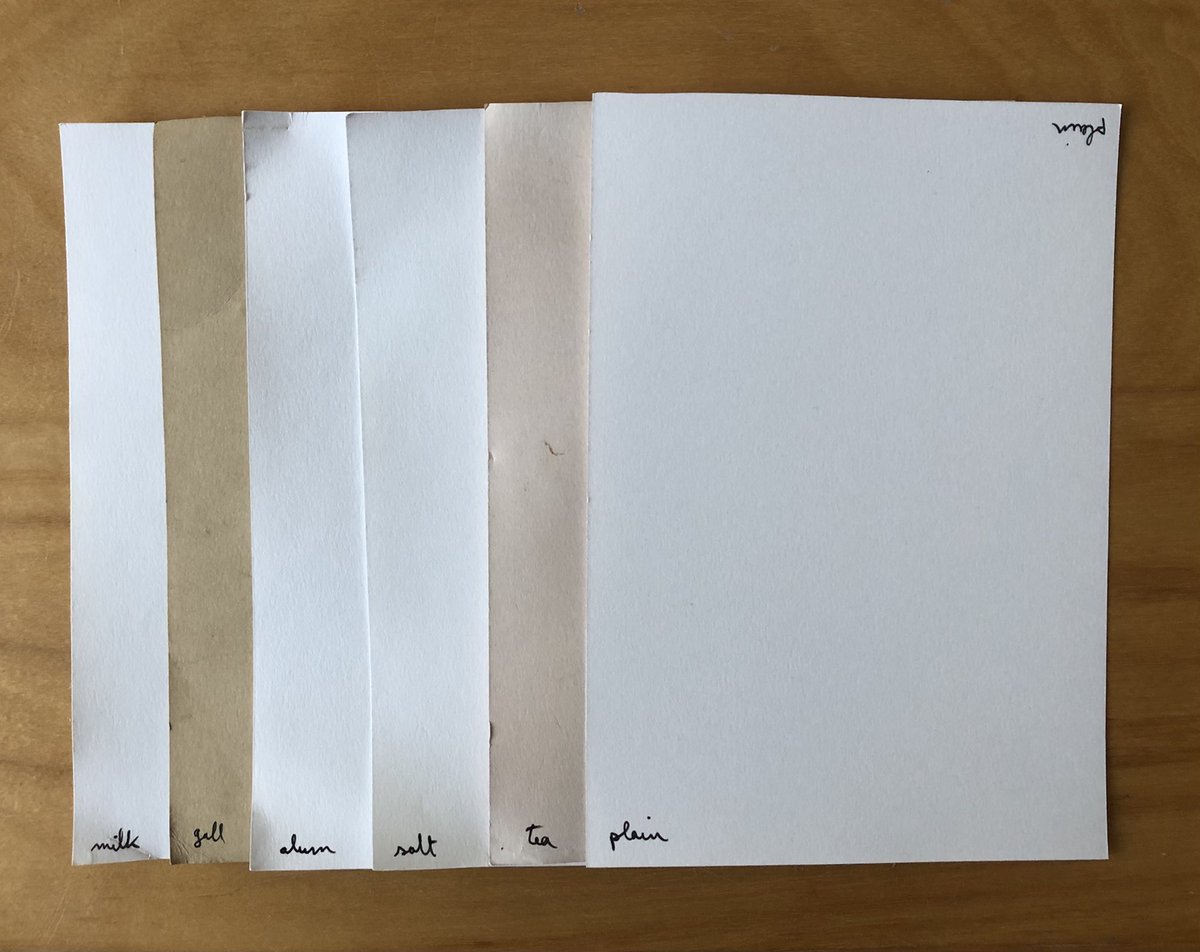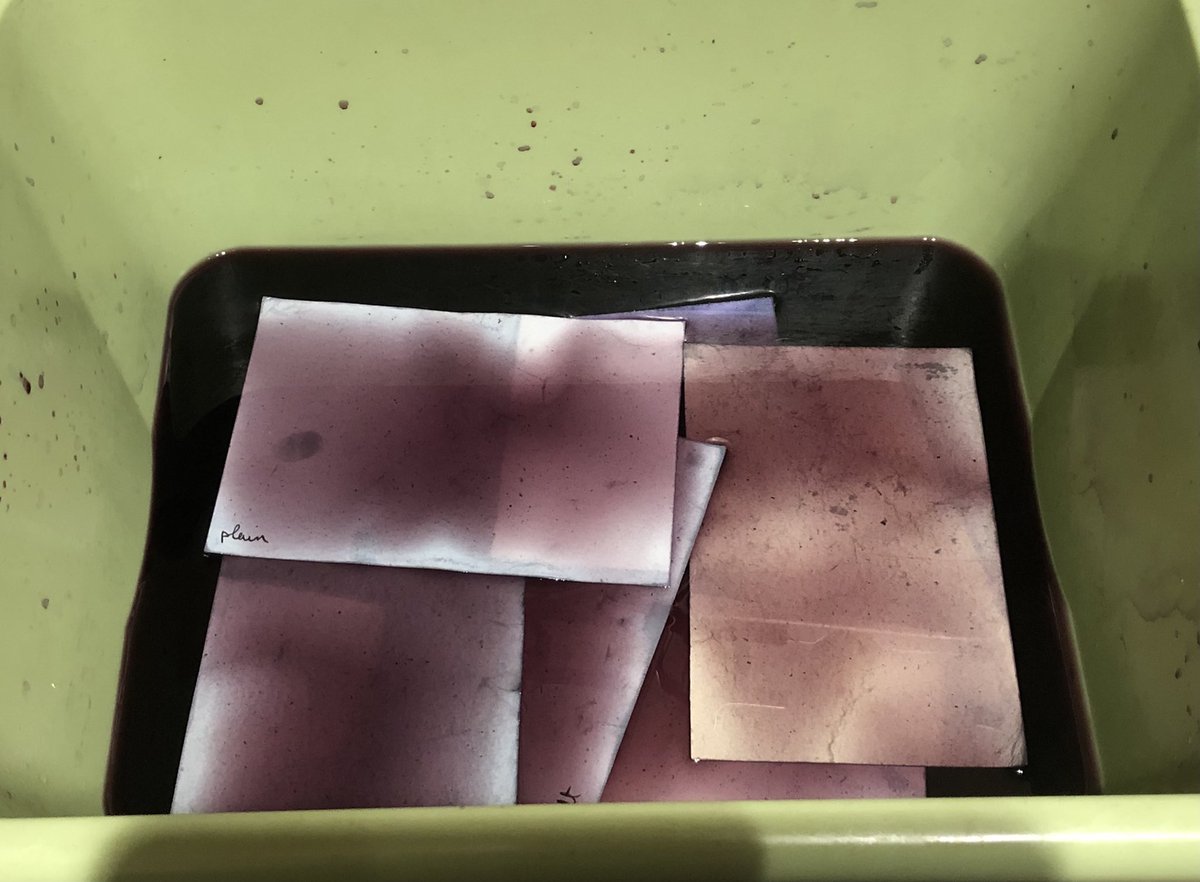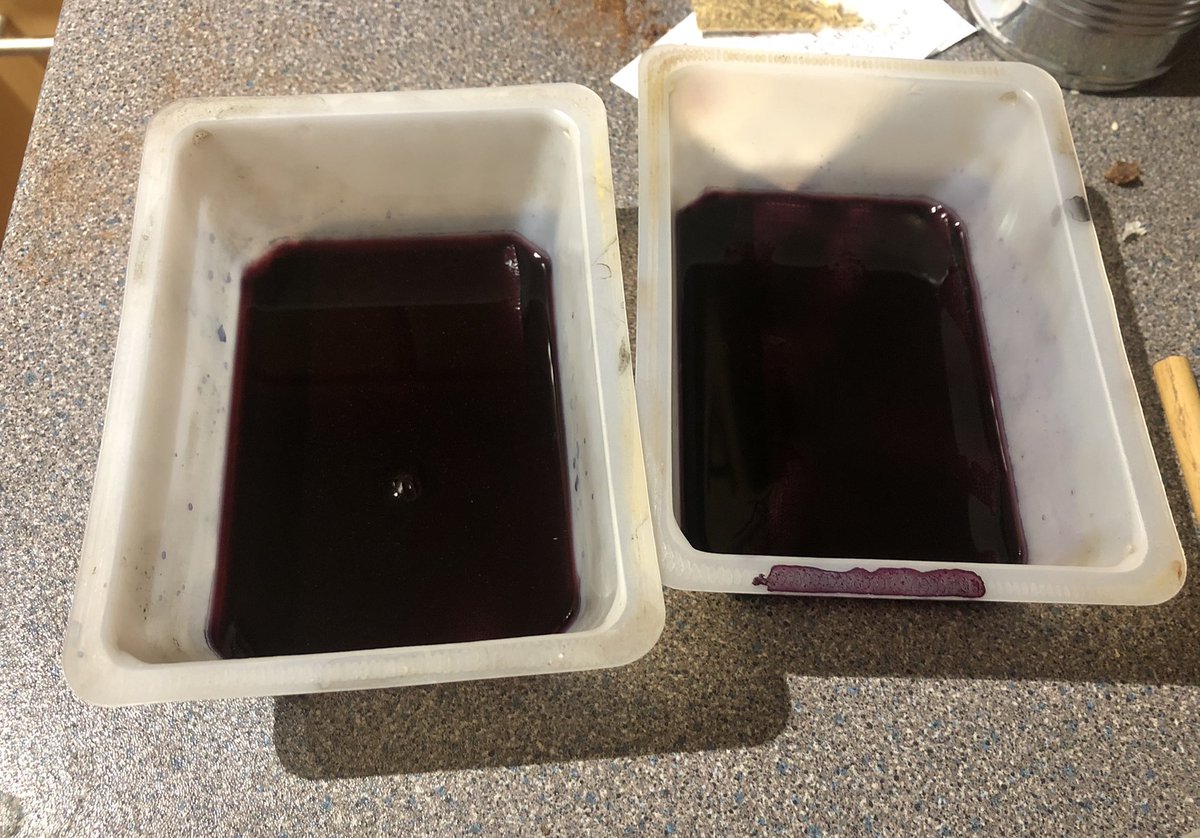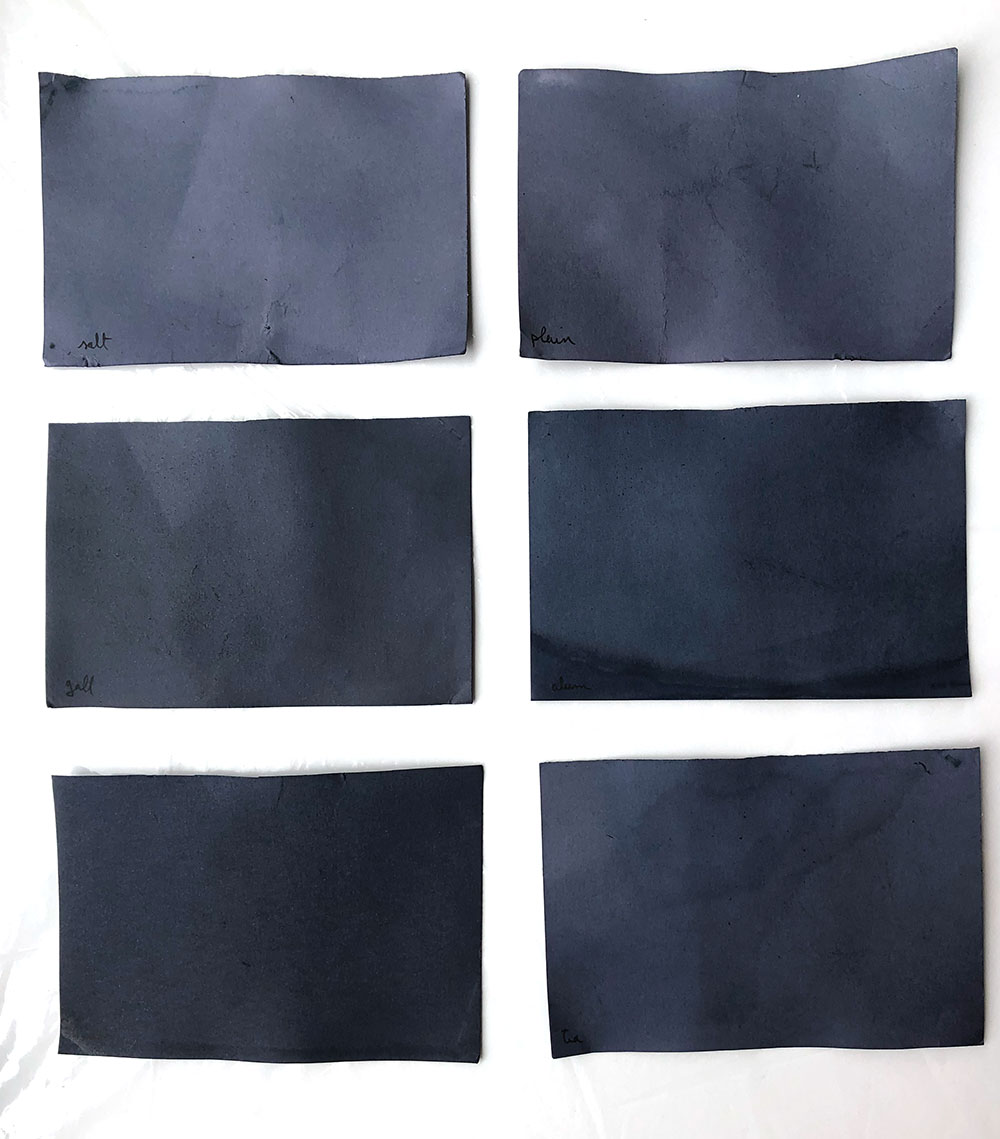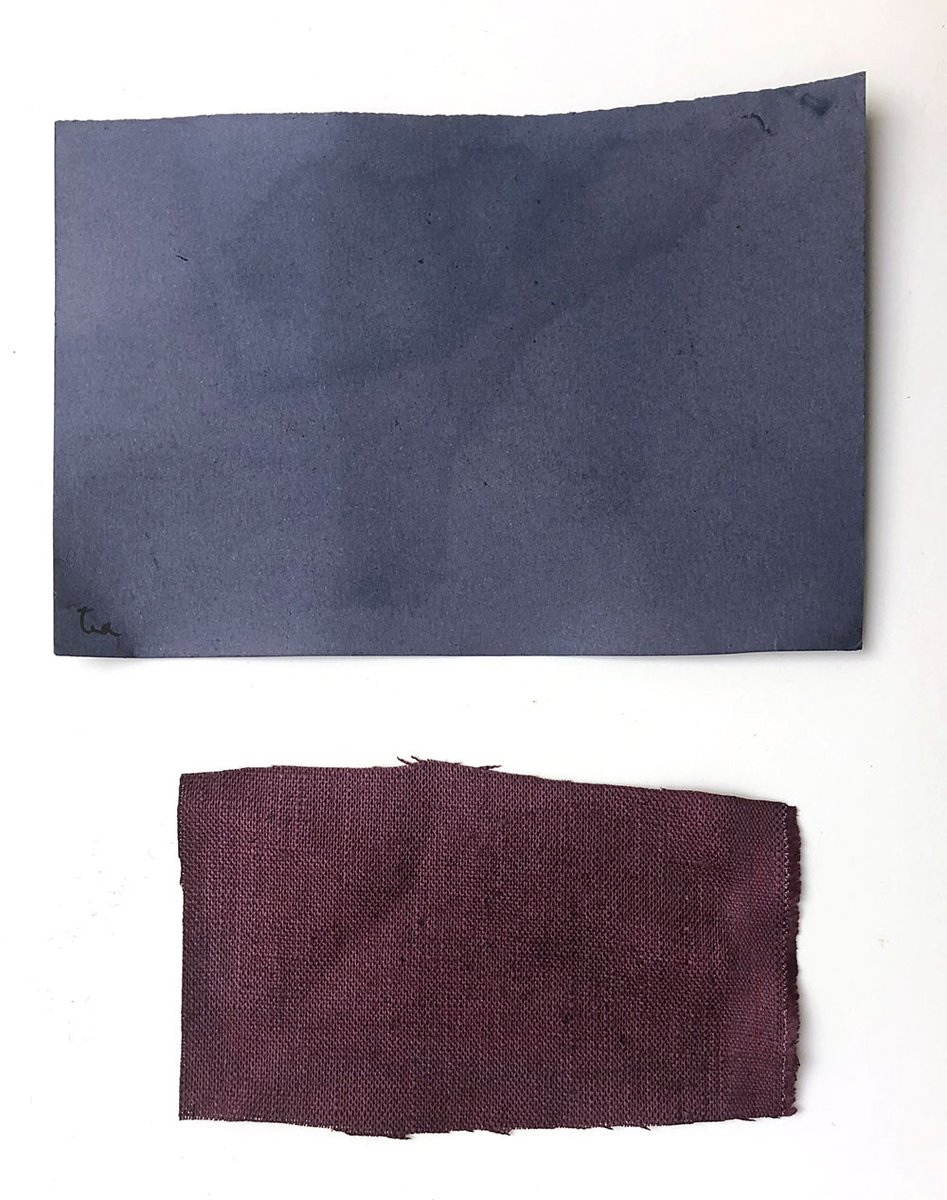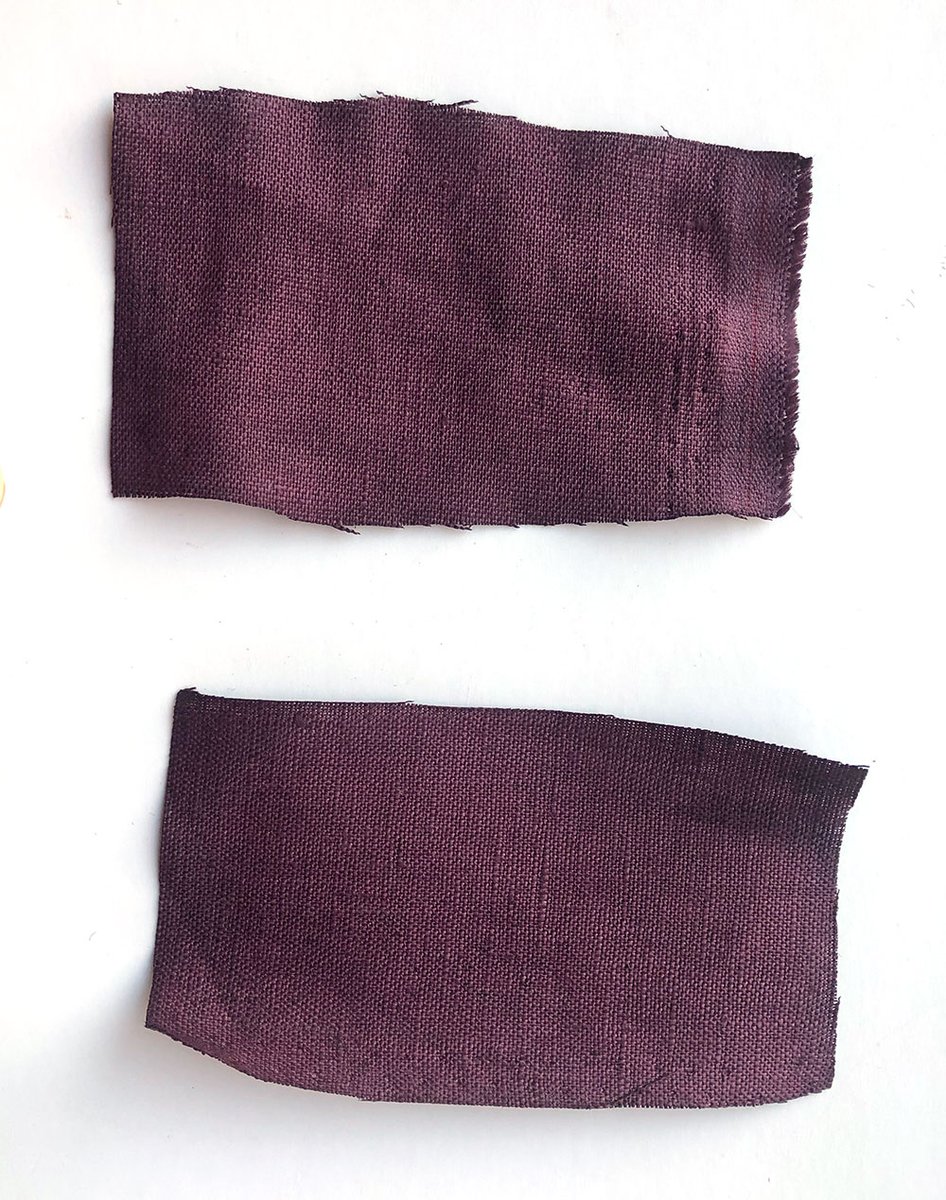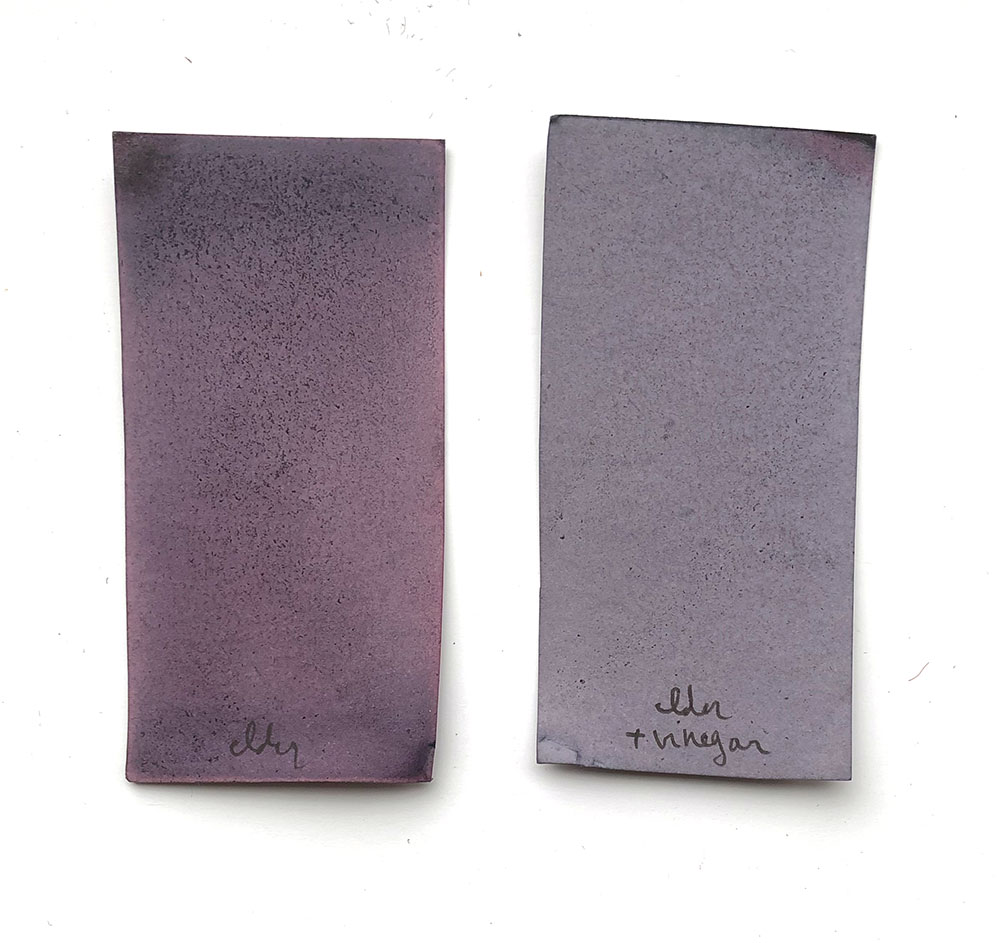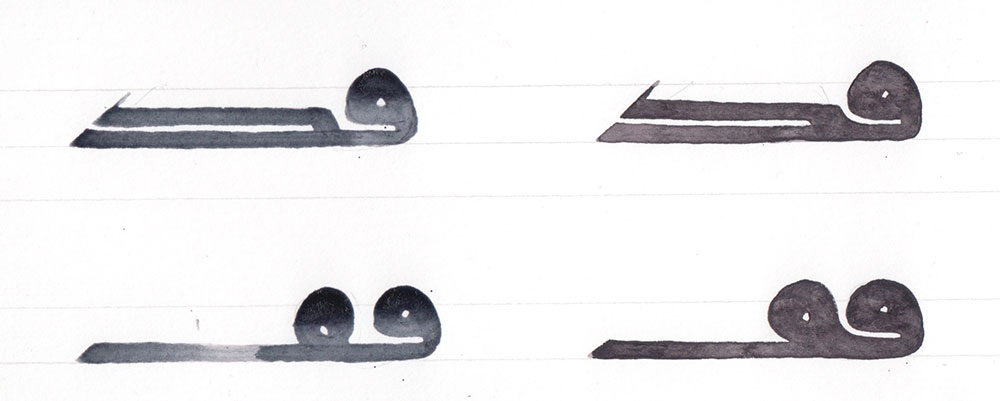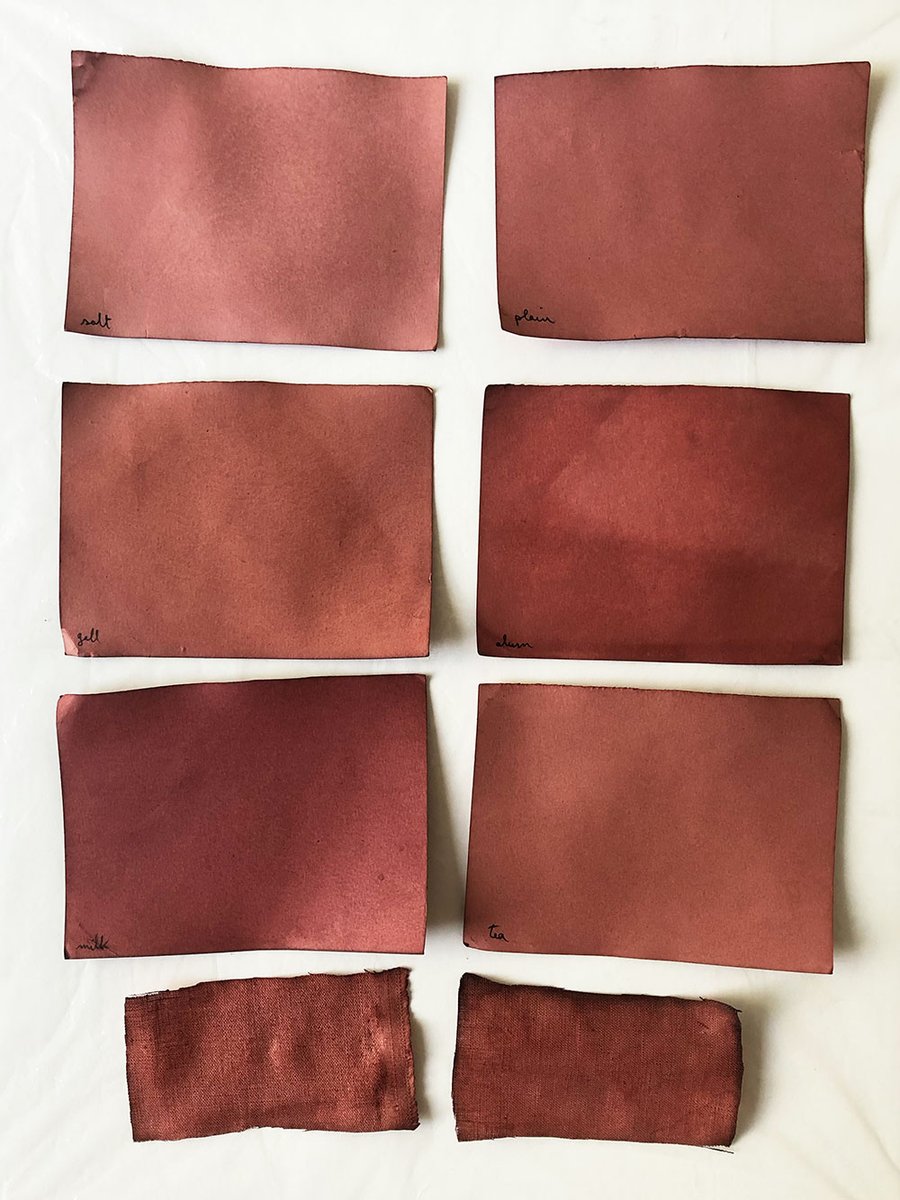While I'm stuck at home again, I started a couple of experiments for the book. I plan to have a chapter on dyeing paper, and have already noticed that mordanted paper takes colour better and more enduringly. So I wanted to try a few different pre-dyeing paper preparations.
Also, clothlets! (or piécettes in French—it has a nice ring) Storing natural inks as liquids is always limited, so I wanted to look into possibly bringing back this ingenious medieval method of dry-storing colours in pieces of fabric (among other ingenious ways I'm also testing).
I'm testing both things using three different natural dyes, and will share the results in this thread.
I’m using an acid-free paper that’s at the low end of the art range. I’m during a plain sheet and others I mordanted respectively with alum, salt, gallnut decoction, tea and soy milk (this last not an actual mordant but a binder).
For the clothlets I'm using unbleached linen. Logically I wouldn't expect to use a mordant, so that the dye is later released when the piece is soaked, but I've seen alum mordant mentioned so I'm going to try both.
First dye: elderberries. The papers get an overnight soak, are dried, then dyed again to see if it intensifies the colours (paper doesn’t behave like cloth). The clothlets bathe in a more concentrated dye and will be dried and re-soaked till they appear saturated.
Here's the result for elderberry-dyed paper. Sorry, lighting conditions weren't ideal so photo isn't accurate, but the colour is noticeably more intense on papers prepared with alum or milk. Other preps are barely better than the plain sheet; gallnut being brown affects the hue.
This isn't to say alum and milk are equally good: still need to test fading. Alum creates a chemical bond with the paper and I already observed how much it helps. Milk creates no chemical bond, so we'll see. This will take months, unless I repurpose my UV light phone sanitizer 

Here's the paper compared with a clothlet. The linen is much closer to the actual elderberry juice colour. It turned much more blue on the paper. This is the hue I usually get when adding vinegar to elderberry, so the paper may not be totally acid-free.
But no paper is pH-neutral, if it's not acid it's slightly alkaline. I'd have to test many brands to find one close to neutral, but it's easier to adjust inks. Being generous with the gum arabic also helps to isolate the colourant & keep it truer to its original hue (if desired).
There is no visible difference between the mordanted and umordanted clothlets, but their true test will come when they're steeped in a binder. I'll test all the clothlets together in the end so for now let's set them aside and try another dye.
Before that, though, I wanted to see what happened to the hue if this same paper was dipped in elderberry ink (i.e dye+gum arabic) rather than simple dye. It's not a useful practice as the gum interferes with the colour absorption (that's what it's there for) but I wondered if
it would also isolate it from the paper's modifying effect. I left a piece to soak overnight in the ink, then added vinegar to the ink and soaked another. The more acid ink looked much redder, but dried much bluer. (Both pretty pale after such a long soak: poor absorption)
This wasn't part of the experiment, but I was preparing course sheets and needed a contrasting colour so I used the elderberry. It dried a vexingly good grey (left; weak gallnut on right). Not the contrast I was hoping for...

 Read on Twitter
Read on Twitter